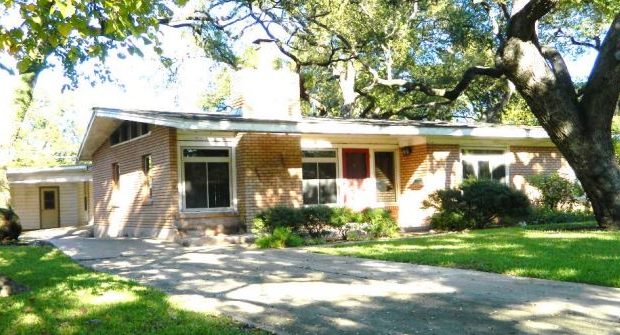Midcentury modern demolition brings dysfunction to the fore at Historic Landmark Commission
Wednesday, December 21, 2016 by
Elizabeth Pagano Ideological tension at the Historic Landmark Commission bubbled to the surface Monday over the proposed demolition of a midcentury modern home built in the 1950s.
Commissioners were evenly split on whether to release the demolition permit for the home at 2506 Great Oaks Parkway in a vote of 5-5. That vote prevented the demolition from happening for now, though the demolition permit would be automatically released in 75 days.
The delay concerned Commissioner Arif Panju, who addressed recent concerns about the commission directly after Commissioner Terri Myers suggested the case be postponed in order to allow staff more time for research.
“It’s super tenuous that this is even close to being a landmark. It would be against the owner’s wishes. … What exactly are we looking to accomplish at this point, other than burdening the homeowner(s)?” asked Panju, who pointed out that zoning the property as historic over the homeowners’ wishes would require the support of eight commissioners, and five of the 11 members of the commission had just voted to move forward with demolition.
“This is completely rotten,” he said. “There was an article in the (Austin American-)Statesman this weekend about this commission. Of course, there’s a lot of scrutiny on it; a lot of people think it’s dysfunctional.”
Chair Mary Jo Galindo disagreed that the postponement was the type of issue that had given the commission its dysfunctional reputation, pointing to Panju instead.
“Our dysfunction is you, sir. You’re an obstructionist. You are not engaging in the business of the Historic Landmark Commission,” said Galindo, who noted that researching the historic merit of the home is the job of the commission.
Myers defended her motion and explained that she needed more information on the house. “Once it’s gone, it’s gone forever,” she said. “I would like to give it due diligence.”
Commissioners will get that chance, after a 6-4 vote to postpone the case, with commissioners Panju, David Whitworth, Alex Papavasiliou and Kevin Koch voting in opposition.
Prior to the discussion between commissioners, architect David Webber of Webber + Studio explained the reasoning behind the proposed demolition on behalf of his clients, Jim and Victoria Brown. He said that the Browns originally intended to renovate the existing house and remodel only its back half. However, a combination of insect damage, rodent damage, rot and other issues led them to rethink that plan and seek a demolition permit.
Webber said that the Browns are, in fact, in the process of moving from a historic schoolhouse in Fredericksburg, and although they “generally appreciate” historic landmarks, seeking this designation was not their intention when they bought this particular house.
Hardy•Heck•Moore Inc. President Emily Payne, who is an architectural historian and lifelong resident of the neighborhood, spoke against the demolition. She told the commission that her sister and City Council Member Leslie Pool, both of whom live within 500 feet of the house, had asked her to research it. Payne made her case for preservation based on the historical association with the builder Andrew S. Patton and architect Douglas Sandberg, both of whom she said have made a very significant, if undocumented, contribution to the history of midcentury Austin.
“I think that we put too much emphasis on historical associations based on the occupancy of the house. That’s a really narrow way to look at it,” said Payne. She suggested that the commission consider trends important to the development of Austin within that criteria, such as custom small-scale midcentury subdivisions like the one this house is a part of.
Webber said he had great respect for Payne and, in many ways, agreed with her. However, he questioned whether the home was truly historic.
Though some of the commissioners seemed convinced by Payne’s reasoning, the other half of the commission clearly was not.
“This applicant has the worst possible luck,” said Whitworth. “The sister of the president of Hardy•Heck•Moore lives five houses down? … This poor applicant.”
Photo courtesy of the city of Austin.
The Austin Monitor’s work is made possible by donations from the community. Though our reporting covers donors from time to time, we are careful to keep business and editorial efforts separate while maintaining transparency. A complete list of donors is available here, and our code of ethics is explained here.
You're a community leader
And we’re honored you look to us for serious, in-depth news. You know a strong community needs local and dedicated watchdog reporting. We’re here for you and that won’t change. Now will you take the powerful next step and support our nonprofit news organization?









